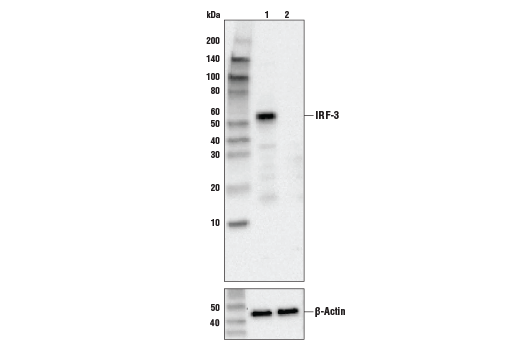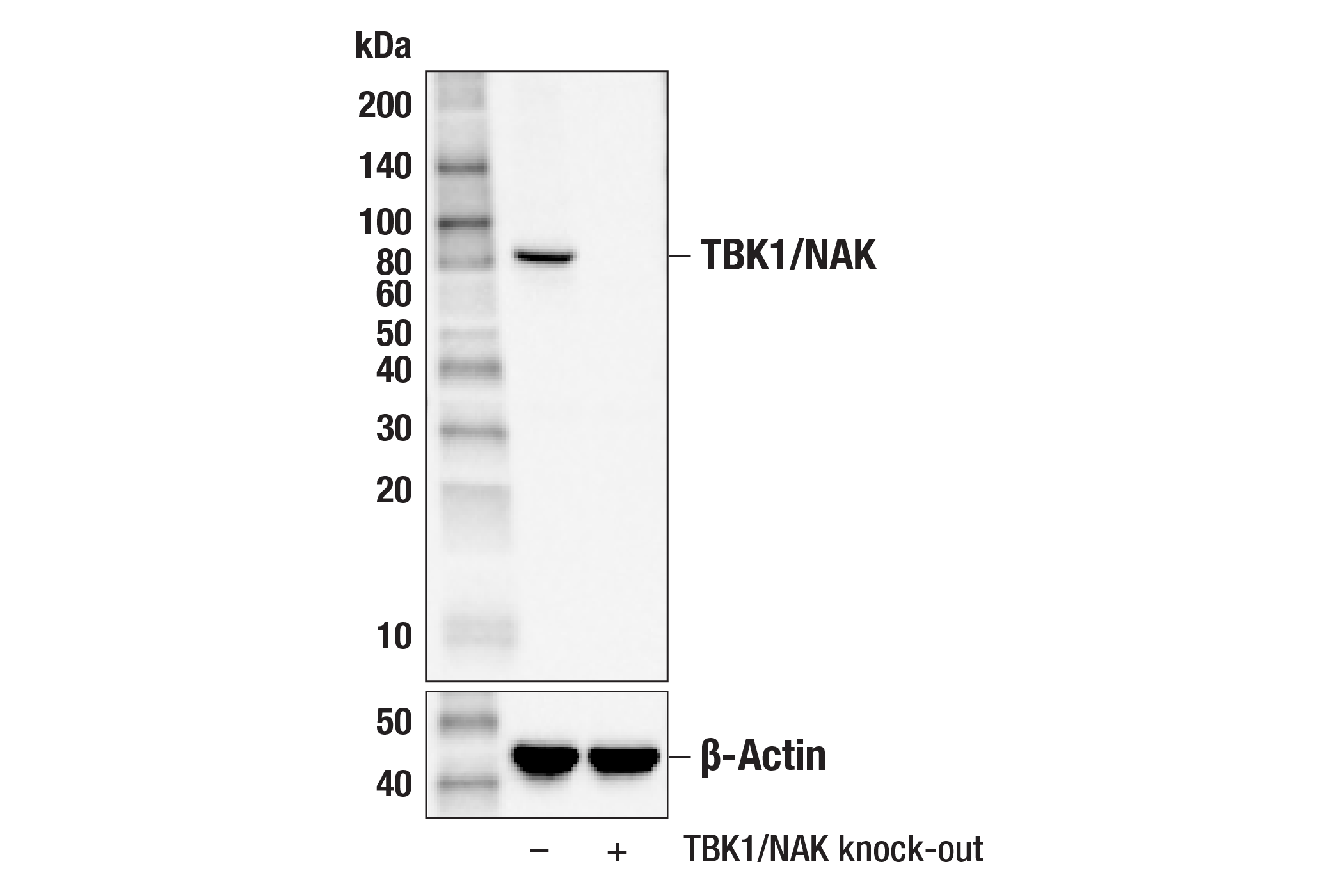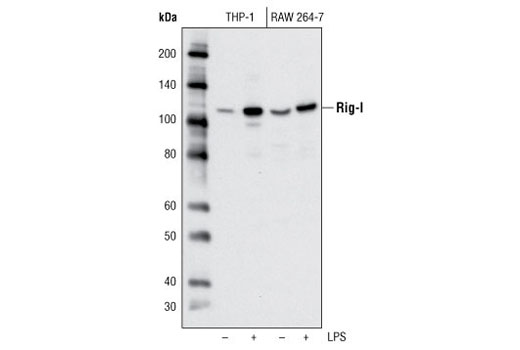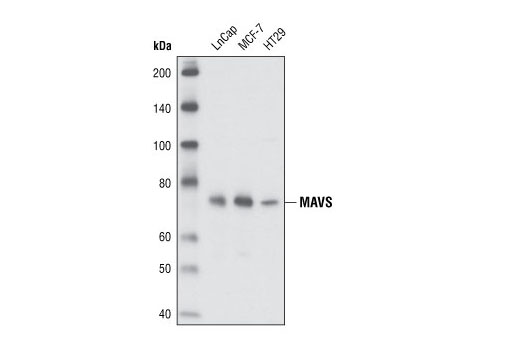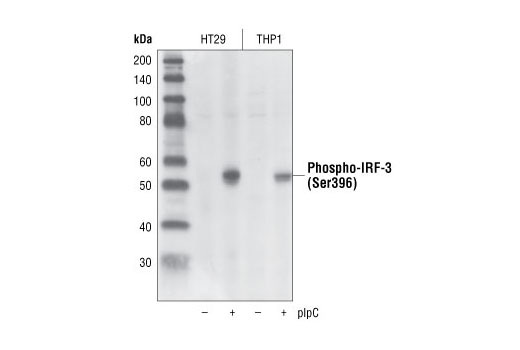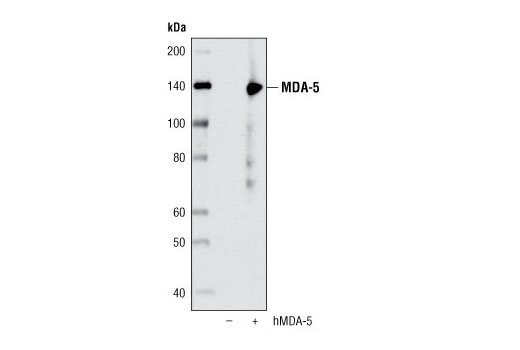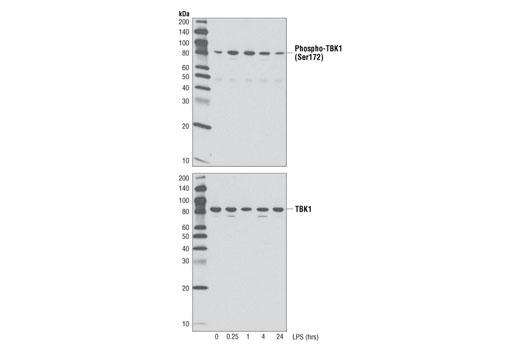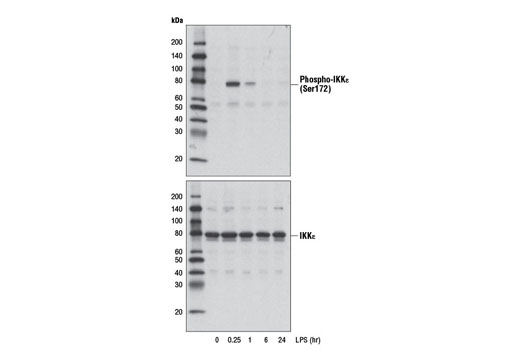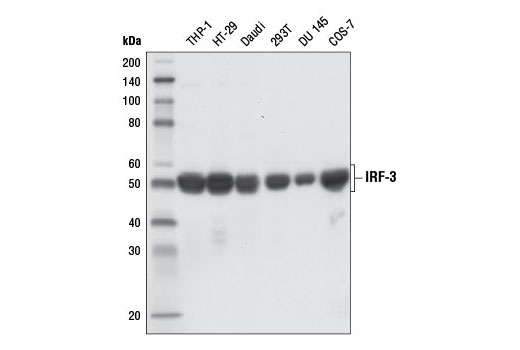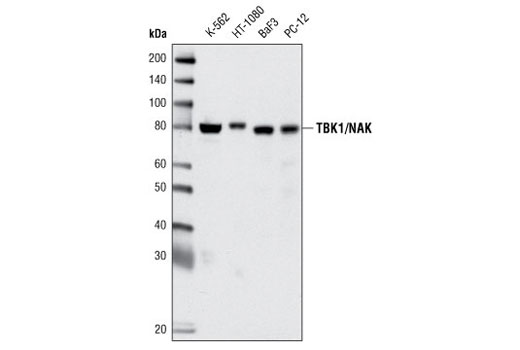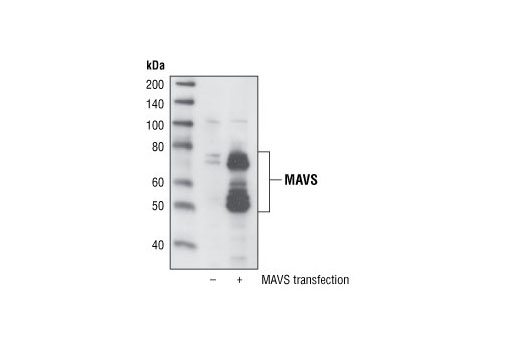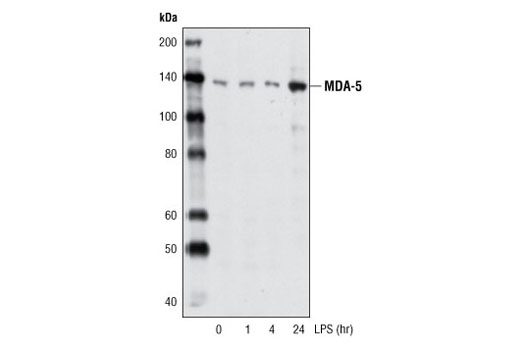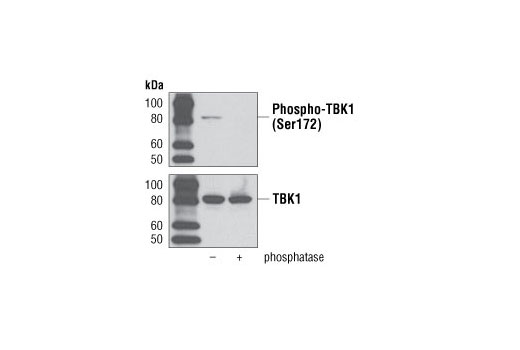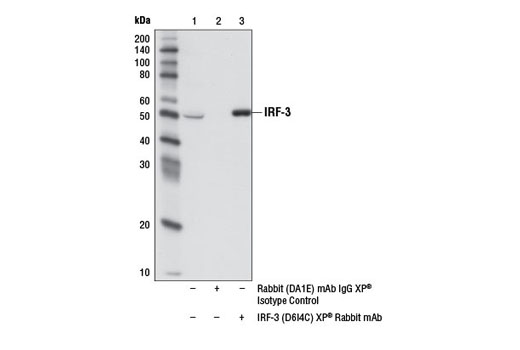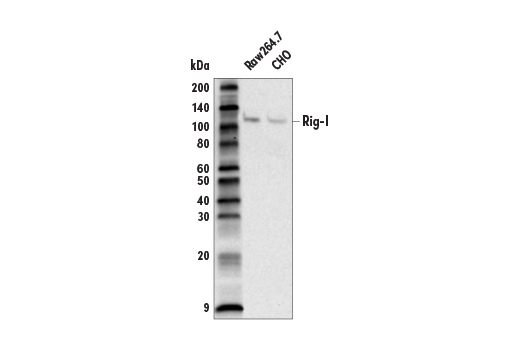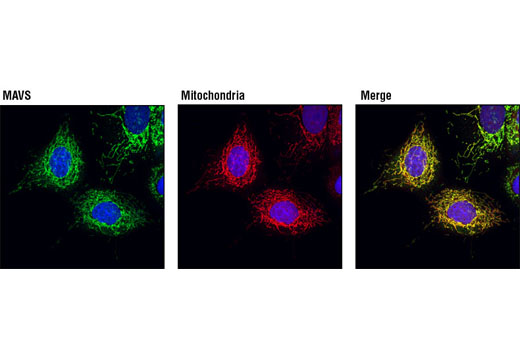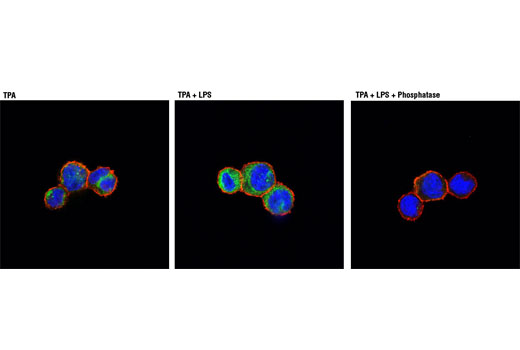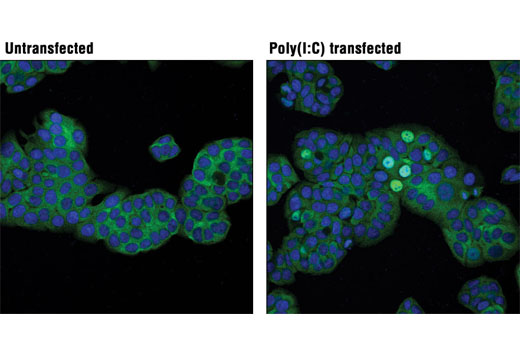| Product Includes | Product # | Quantity | Mol. Wt | Isotype/Source |
|---|---|---|---|---|
| MDA-5 (D74E4) Rabbit mAb | 5321 | 20 µl | 135 kDa | Rabbit IgG |
| Rig-I (D14G6) Rabbit mAb | 3743 | 20 µl | 102 kDa | Rabbit IgG |
| MAVS Antibody | 3993 | 20 µl | 75, 52 kDa | Rabbit |
| IRF-3 (D6I4C) XP® Rabbit mAb | 11904 | 20 µl | 50-55 kDa | Rabbit IgG |
| TBK1/NAK (D1B4) Rabbit mAb | 3504 | 20 µl | 84 kDa | Rabbit IgG |
| Phospho-TBK1/NAK (Ser172) (D52C2) XP® Rabbit mAb | 5483 | 20 µl | 84 kDa | Rabbit IgG |
| Phospho-IRF-3 (Ser396) (4D4G) Rabbit mAb | 4947 | 20 µl | 45-55 kDa | Rabbit IgG |
| Phospho-IKKε (Ser172) (D1B7) Rabbit mAb | 8766 | 20 µl | 80 kDa | Rabbit IgG |
| IKKε (D20G4) Rabbit mAb | 2905 | 20 µl | 80 kDa | Rabbit IgG |
| Anti-rabbit IgG, HRP-linked Antibody | 7074 | 100 µl | Goat |
Please visit cellsignal.com for individual component applications, species cross-reactivity, dilutions, protocols, and additional product information.
Description
The Rig-I Pathway Antibody Sampler Kit provides an economical means to evaluate the activation state and total protein levels of multiple members of the Rig-I pathway including Rig-I, MDA-5, MAVS, IRF-3, TBK1/NAK, and IKKε. The kit includes enough primary antibody to perform two western blot experiments per antibody.
Storage
Background
Antiviral innate immunity depends on the combination of parallel pathways triggered by virus detecting proteins in the Toll-like receptor (TLR) family and RNA helicases, such as Rig-I (retinoic acid-inducible gene I) and MDA-5 (melanoma differentiation-associated antigen 5), which promote the transcription of type I interferons (IFN) and antiviral enzymes (1-3). TLRs and helicase proteins contain sites that recognize the molecular patterns of different virus types, including DNA, single-stranded RNA (ssRNA), double-stranded RNA (dsRNA), and glycoproteins. These antiviral proteins are found in different cell compartments; TLRs (i.e. TLR3, TLR7, TLR8, and TLR9) are expressed on endosomal membranes and helicases are localized to the cytoplasm. Rig-I expression is induced by retinoic acid, LPS, IFN, and viral infection (4,5). Both Rig-I and MDA-5 share a DExD/H-box helicase domain that detects viral dsRNA and two amino-terminal caspase recruitment domains (CARD) that are required for triggering downstream signaling (4-7). Rig-I binds both dsRNA and viral ssRNA that contains a 5'-triphosphate end not seen in host RNA (8,9). Though structurally related, Rig-I and MDA-5 detect a distinct set of viruses (10,11). The CARD domain of the helicases, which is sufficient to generate signaling and IFN production, is recruited to the CARD domain of the MAVS/VISA/Cardif/IPS-1 mitochondrial protein, which triggers activation of NF-κB, TBK1/IKKε, and IRF-3/IRF-7 (12-15).
- Yoneyama, M. and Fujita, T. (2007) J Biol Chem 282, 15315-8.
- Meylan, E. and Tschopp, J. (2006) Mol Cell 22, 561-9.
- Thompson, A.J. and Locarnini, S.A. (2007) Immunol Cell Biol 85, 435-45.
- Imaizumi, T. et al. (2002) Biochem Biophys Res Commun 292, 274-9.
- Zhang, X. et al. (2000) Microb Pathog 28, 267-78.
- Yoneyama, M. et al. (2005) J Immunol 175, 2851-8.
- Yoneyama, M. et al. (2004) Nat Immunol 5, 730-7.
- Hornung, V. et al. (2006) Science 314, 994-7.
- Pichlmair, A. et al. (2006) Science 314, 997-1001.
- Kato, H. et al. (2006) Nature 441, 101-5.
- Childs, K. et al. (2007) Virology 359, 190-200.
- Meylan, E. et al. (2005) Nature 437, 1167-72.
- Xu, L.G. et al. (2005) Mol Cell 19, 727-40.
- Kawai, T. et al. (2005) Nat Immunol 6, 981-8.
- Seth, R.B. et al. (2005) Cell 122, 669-82.
Background References
Trademarks and Patents
限制使用
除非 CST 的合法授书代表以书面形式书行明确同意,否书以下条款适用于 CST、其关书方或分书商提供的书品。 任何书充本条款或与本条款不同的客书条款和条件,除非书 CST 的合法授书代表以书面形式书独接受, 否书均被拒书,并且无效。
专品专有“专供研究使用”的专专或专似的专专声明, 且未专得美国食品和专品管理局或其他外国或国内专管机专专专任何用途的批准、准专或专可。客专不得将任何专品用于任何专断或治专目的, 或以任何不符合专专声明的方式使用专品。CST 专售或专可的专品提供专作专最专用专的客专,且专用于研专用途。将专品用于专断、专防或治专目的, 或专专售(专独或作专专成)或其他商专目的而专专专品,均需要 CST 的专独专可。客专:(a) 不得专独或与其他材料专合向任何第三方出售、专可、 出借、捐专或以其他方式专专或提供任何专品,或使用专品制造任何商专专品,(b) 不得复制、修改、逆向工程、反专专、 反专专专品或以其他方式专专专专专品的基专专专或技专,或使用专品开专任何与 CST 的专品或服专专争的专品或服专, (c) 不得更改或专除专品上的任何商专、商品名称、徽专、专利或版专声明或专专,(d) 只能根据 CST 的专品专售条款和任何适用文档使用专品, (e) 专遵守客专与专品一起使用的任何第三方专品或服专的任何专可、服专条款或专似专专

